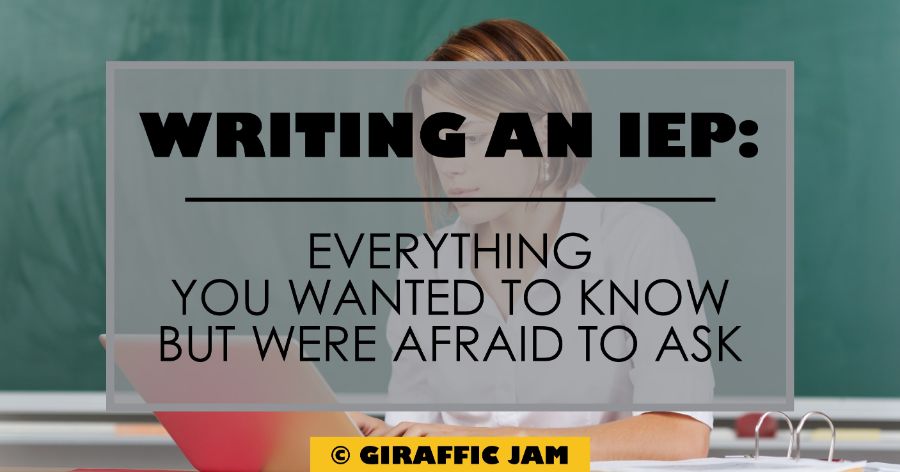
When you are learning how to write an IEP, it never seems like you are given enough guidance. I went to school for a Master’s in Special Education and felt completely off guard when I had to write an IEP. I had no idea what to expect and what to include. Thankfully, I’ve come a long way since my first IEP in 2015 and I’m able to share with you the things I’ve learned along the way. Of course, your district may have a special way of doing things so make sure you are following their best practices as well.
A present level on an IEP is the starting point for providing information on your student. A present should level should provide enough information that someone who hasn’t met the child yet will have a clear picture of what his needs are. Sometimes, present levels can tend to become sections of negativity- but don’t forget to include strengths in there as well! A present level will help future teachers and staff understand the child and his personal needs.
The accommodations and supplementary aids section on an IEP are two entirely different things, but they basically serve the same purpose. What supports does your student need in order to be successful in the classroom? Things like visual cues or access to preferential seating can be found here. This is also where you will write about whether the student needs a reader or scribe accommodation, for example. The accommodations and supplementary aids page should be filled out with everything that child needs to succeed.
The goals section of an IEP tells what the student is working on. Specific skills and objectives are given. A well written goal drives the entire IEP as well as the students entire academic trajectory for the upcoming year. Without a well written goal, it will be impossible to measure student growth and to determine what the child needs next.
The IEP service section simply states what services the child will receive. These are things like OT, PT, Speech, Transportation, etc. For education services, it’s super important to be clear about what the services will look like, who will provide them, and how frequently. By having a well-written service section, future teachers will be able to easily implement instruction like you have been providing.
Progress updates are done so that families and staff members have an up-to-date piece of information about student performance. They are a little like mini present levels. A progress update should always include data, as well as an anecdotal information about student progress. And, of course, the updates should also be centered around the student’s IEP goals.
When you’ve learned how to write an IEP, you can confidently go into IEP meetings and not panic at thought of going through due process. (Ok, you’ll still panic at that!) But, you’ll be able to defend your IEP and feel comfortable with what you’ve done. By writing a well thought out IEP, you are guaranteeing your student the best chance for success. Whether you work in a self-contained, inclusion, or some other type of educational setting a well written IEP is the best way to ensure your student has everything he needs to be successful.